 |
 |
 |
 |
 |
 |
 |
 |
Click on the picture of your favorite celebrity to view more information. | |
 |
|||||||||
|
A MATCHLESS LIBRARY TELEVISION ARCHIVE |
 |
|
 |
|
 |
|
 |
|
 |
|
 |
|
 |
|
 |
|
 |
|
 |
|
 |
|
 |
|
 |
|
 |
|
 |
|
 |
|
 |
|
 |
|
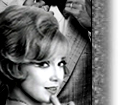 |
|
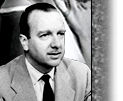 |
|
 |
|
 |
|
 |
|
 |
|
 |
|
 |
|
 |
|
 |
|
 |
|
 |
|
 |
|
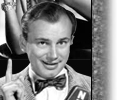 |
|
 |
|
 |
|
 |
|
 |
|
 |
|
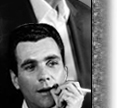 |
|
 |
|
 |
|
 |
|
 |
|
 |
|
 |
|
 |
|
 |
|
 |
|
 |
|
 |
|
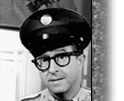 |
|
 |
|
 |
|
 |
|
 |
|
 |
|
 |
|
 |
|
 |
|
 |
|
 |
|
 |
|
 |
|
 |
|
 |
|
 |
|
 |
|
 |
|
 |
|
 |
|
 |
|
 |
|
 |
|
 |
|
 |
|
 |
|
 |
|
 |
|
 |
|
 |
|
 |
|
 |
|
 |
|
 |
|
 |
|
 |
|
 |
|
 |
|
 |
|
 |
|
 |
|
 |
|
 |
|
 |
|
 |
|
 |
|
 |
|
 |
|
 |
|
 |
|
 |
|
 |
|
 |
|
 |
|
 |
|
 |
|
 |
|
 |
|
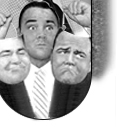 |
|
| Tributes | Talk | Events | News | Variety |
| Documentary | Music | Comedy | Juvenile | Awards |
| Biography | Sports | Productions | Others | Quiz |
| Specials |
|
4376 Results found in Category Specials Pages: 17 18 19 20 21 22 23 24 25 26 27 28 29 30 31 32 33 34 35 36 37 38 39 40 41 [42] 43 44 45 46 47 48 49 50 51 52 53 54 55 56 57 58 59 60 61 62 63 64 65 66 67 |
|
#8960:
NBC NEWS SPECIAL: FRANCE AFTER DEGAULLE.
1969-04-28, NBC, 60 min. David Brinkley , Frank Bourgholtzer , Garrick Utley , Charles DeGaulle A special report on the resignation of French President Charles DeGaulle. |
|
#9399:
" SPRING THING."
1969-04-28, NBC, 57 min. Goldie Hawn , Shirley Bassey , Bobbie Gentry , Noel Harrison , Rod McKuen , Meredith MacRae , Harpers Bizarre , Irwin C. Watson Noel Harrison and Bobbie Gentry host a salute to Spring. The light-hearted hour, keyed to boy-meets-girl, features poet-singer composer Rod McKuen (performing his own compositions), Shirley Bassey, Goldie Hawn of "Laugh-In", Meredith MacRae (Petticoat Junction), Harpers Bizarre, and comic Irwin C. Watson. The Hosts: Bobbie Gentry and Noel Harrison. In 1969, Noel Harrison hosted an hour-long special on America's NBC network called Spring Thing. The programme was sponsored by textile company Celanese, who made a wrinkle-resistant fabric called Arnel. Some commercials are contained in his audio air check. Speaking about the television show in 1969, Noel Harrison said: "Everyone in Spring Thing is young, talented, energetic and is blossoming career-wise. My co-host, Bobbie Gentry, has a lovely voice and a great mind and plays guitar beautifully." Unusually, the show was also shown by the BBC in Britain in April, 1970. No Video tape or kinescope film footage of the show is believed to survive. |
|
#10165:
NBC NEWS SPECIAL: FRANCE AFTER DEGAULLE.
1969-04-28, NBC, 60 min. David Brinkley , Frank Bourgholtzer , Garrick Utley , Charles DeGaulle A special report on the resignation of French President Charles DeGaulle. Duplicate of # 8960. |
|
#1067:
DAVID FROST PRESENTS
1969-05-04, WNEW, 48 min. David Frost , John Cleese , Tim Brooke Taylor , Connie Booth , Graham Chapman , Gillian Lind , Michael Palin , Dick Vosturgh David Frost presents a bevy of British comics who satirize those people who irritate other people. Sketches on the art of causing nervous breakdowns are performed by John Cleese, Connie Booth, Tim Brooke-Taylor, Graham Chapman, Gillian Lind, Michael Palin and Dick Vosturgh. |
|
#6011:
ANDY WILLIAMS SPECIAL: H. ANDREW WILLIAMS MAGIC LANTERN SHOW COMPANY
1969-05-04, NBC, 52 min. Andy Williams , Aretha Franklin , Roger Miller , Sergio Mendes & Brasil '66 , Claudine Longet , Mrs. Andy Williams , Jimmie Haskell , Sweet Inspirations Joining Andy Williams for this SPECIAL hour of musical entertainment are Aretha Franklin (backed by the Sweet Inspirations), Roger Miller, and Sergio Mendes & Brasil '66.
This Special broadcast took 18 hours to tape the introductions, with Andy Williams joining his guests in bits of their hits ("think" with Aretha, "Mas Que Nada" with Sergio and "King of the Road" with Roger). Andy also sows films of ta Brazilian jungle and closes with a concert segment before a teen audience.
HIGHLIGHTS
"Happy Heart," "Here, There and Everywhere," "This Guy's in Love with You," "For Once in My Life," "My Way"........Andy Williams
"Chain of Fools," "You Send Me"..................Aretha Franklin
"Little Green Apples,"............................Roger Miller
"The Fool on the Hill"............................Brazil '66
"Like a Lover," "One-Note Samba," "Spanish Flea"..........................................Andy, Brasil '66
"In the Summertime"................Andy Williams & Roger Miller
Note: This broadcast seems to have vanished with the exception of of three analog Video Tape format recordings (1' Type C, 1/2" Beta Cam, and 1/2" VHS) located at UCLA Film & TV (Non-Circulating). Otherwise, not archived in any of the other major museums, independent collections or posted on the Internet.
The sound of this Archival Television Audio Air Check was recorded at the time of the original broadcast, "direct line," resulting in excellent audio.
|
|
#1068:
BEST ON RECORD: THE ELEVENTH ANNUAL GRAMMY AWARDS SHOW, THE
1969-05-05, WNBC, 54 min. Tennessee Ernie Ford , Simon & Garfunkel , The Beatles , The King Family , Don Rickles , Dan Rowan , Dick Martin , Tom Smothers , The Temptations , Bobbie Gentry , Lou Rawls , Glen Campbell , Dionne Warwick , Mason Williams , Jose Feliciano , Henry Mancini , Flip Wilson , Jeannie C. Riley , Burt Bacharach , Mama Cass Elliot , Nancy Sinatra , Davy Jones , Bobby Goldsboro , Tiny Tim Dan Rowan and Dick Martin open this musical special which features the 1968 Grammy winners performing their hits. Celebrities include The Temptations, Flip Wilson, Jeannie C. Riley, The King Family, Jose Feliciano, Lou Rawls, Bobbie Gentry, Glen Campbell, Burt Bacharach, Dionne Warwick, Mama Cass Elliot, The Beatles, Nancy Sinatra, Mason Williams, Davy Jones, Bobby Goldsboro, Tiny Tim, Don Rickles, Simon & Garfunkel, Tennessee Ernie Ford, Tom Smothers, Henry Mancini, and the Broadway cast of "Hair." |
|
#1069:
QUEEN ELIZABETH 2
1969-05-07, WCBS, 43 min. Jim Jensen , Leonard Harris , Jack Whitaker A special report recapping the day's events of the arrival of the Cunard Line's New Liner, Queen Elizabeth 2. Jim Jensen, Leonard Harris, & Jack Whitaker report. |
|
#788:
ABC NEWS SPECIAL REPORT WITH HOWARD K. SMITH
1969-05-14, WABC, 60 min. Richard M. Nixon , Howard K. Smith President Richard M. Nixon talks to the American people from the White House in Washington, D.C. The main topics are the new proposals and initiatives to be taken in Vietnam, where there have been American servicemen killed in action since 1965. Howard K. Smith reacts to the speech. |
|
#9320:
RICHARD M. NIXON PRESS CONFERENCE, THE
1969-05-14, WGY, min. Richard M. Nixon Live radio coverage of President Richard M. Nixon's press conference as he addresses the nation about the war in Viet Nam, his plan for ending it and bringing the American troops home. |
|
#6015:
APOLLO 10 SPACEFLIGHT: A JOURNEY TO THE MOON
1969-05-18, NBC, 150 min. David Brinkley , Chet Huntley , Frank McGee , Roy Neal , Dr. Frank Field , Eugene A. Cernan , Thomas P. Stafford , John Young , Peter Hackes Coverage of the Apollo X mission, a manned test in lunar orbit of the lunar module which will descend to within 10 miles of the lunar surface, in a rehearsal for the July flight which will carry a man to land on the moon. Apollo 10 spaceflight of Navy Commander John Young, Air Force Colonel Thomas P. Stafford, and Navy Commander Eugene A. Cernan. Reporting are Chet Huntley, Roy Neal, David Brinkley, Peter Hackes, Frank McGee, and Dr. Frank Field. |
|
#5004:
ALAN KING AND HIS BUDDY
1969-05-19, WNBC, 52 min. Alan King , Karen Morrow , Buddy Hackett , Linda Lavin Alan and his pal Buddy Hackett take satirical aim at married life. |
|
#6016:
APOLLO 10 SPACEFLIGHT: A JOURNEY TO THE MOON
1969-05-22, NBC, 150 min. David Brinkley , Chet Huntley , Frank McGee , Roy Neal , Dr. Frank Field , Eugene A. Cernan , John Young , Peter Hackes Apollo report, update and progress of Apollo 10 spaceflight with Navy Commander John Young and Air Force Commander Eugene A. Cernan. Reporting are Chet Huntley, Roy Neal, Peter Hackes, David Brinkley, Frank McGee, and Dr. Frank Field. |
|
#6017:
APOLLO 10 SPACEFLIGHT: A JOURNEY TO THE MOON
1969-05-26, NBC, 150 min. David Brinkley , Chet Huntley , Frank McGee , Roy Neal , Dr. Frank Field , Eugene A. Cernan , Thomas P. Stafford , John Young , Peter Hackes Apollo 10 landing of Navy Commander John Young, Air Force Colonel Thomas P. Stafford, and Navy Commander Eugene A. Cernan. Reporting are Chet Huntley, Roy Neal, Peter Hackes, David Brinkley, Frank McGee, and Dr. Frank Field. |
|
#10924:
RETURN OF THE APOLLO 10 SPACECRAFT, THE
1969-05-26, CBS, min. Eugene Cernan , John Young , Thomas Stafford Report on the return of the Apollo Ten spacecraft, having successfully accomplished all its objectives. It cleared the Apollo 11 for its first human landing on the moon. Astronauts Eugene Cernan, John Young, and Thomas Stafford were aboard the Apollo 10. Live coverage from CBS and NBC. |
|
#11314:
"MEMORY OF A MAN" A TRIBUTE TO ROBERT F. KENNEDY
1969-06-01, WNEW, 45 min. Robert F. Kennedy , David Frost In an interview taped in April, 1968, Senator Robert F. Kennedy talks about Communism, his heroes, his public image, and how he would like to be remembered. David Frost is the host. |
|
#6250:
SOUNDS OF SUMMER
1969-06-08, WNET, 90 min. Steve Allen , Count Basie , Sarah Vaughan , Dizzy Gillespie , Willie "The Lion" Smith , Gerry Mulligan , Paul Desmond June 1, 1969-September 28, 1969. A series of cultural events showcased every week. Steve Allen hosts. Jazz from the city of its birth - highlight of New Orleans' second annual International Jazz Festival (taped June 1-7). Sessions with Sarah Vaughan and Count Basie are included. Other performers include Dizzy Gillespie on trumpet, saxophonists Gerry Mulligan & Paul Desmond, pianist Willie "The Lion" Smith, and four traditional New Orleans marching bands. |
|
#7409:
SOUNDS OF SUMMER
1969-06-08, WNET, 00 min. Steve Allen , Count Basie , Sarah Vaughan , Dizzy Gillespie , Willie Smith , Gerry Mulligan , Paul Desmond June 1, 1969-September 28, 1969. A series of cultural events showcased every week. Steve Allen hosts. |
|
#3532:
KING FAMILY SPECIALS
1969-06-08, WNEW, 52 min. The King Family Syndicated. This was "The King Family June Graduation" broadcast. |
|
#1071:
MEMORY OF A MAN: TRIBUTE TO ROBERT F. KENNEDY
1969-06-08, WTTT, 59 min. David Frost , Robert F. Kennedy , George Plimpton , Steve Smith , Adam Malinsky , Edward Kennedy Remembering the one year anniversary of the assassination of Robert F. Kennedy, David Frost presents an interview with Kennedy (filmed on March 25, 1968). This interview, telecast for the first time, is shown in it's entirety, unedited with slates and interruptions exactly the way it was recorded. Frost indicates that this may have been the last personal interview given by the late Senator. It was recorded in a hotel room in Portland, Oregon. Senator Kennedy talks about communism, his heroes, his public image, how he would like to be remembered, the future of America and the Kennedy mystique. At the conclusion of the program, David Frost talks with George Plimpton, Steve Smith (RFK's brother-in-law and campaign manager) and Adam Malinsky (chief speech writer for RFK). They evaluate the Kennedy interview given one year previous. The broadcast concludes with a tape of Senator Edward Kennedy's eulogy for his brother at the time of Robert F. Kennedy's funeral, on June 6, 1968. |
|
#5435:
SAJID KHAN SPECIAL
1969-06-15, WNEW, 52 min. Susan Barrett , Sajid Khan , The Harpers Bizarre A variety special profiling the talent of 17 year old Sajid Kahn. |
|
#19781:
NEW YORK CITY PRIMARY RETURNS
1969-06-17, , min. Unknown New York City primary election returns. |
|
#19784:
PRESIDENT NIXON NEWS CONFERENCE
1969-06-19, CBS, min. Eric Sevareid , Richard Nixon , Dan Rather President Nixon holds news conference about Vietnam war. Discussion after the conference by Dan Rather and Eric Sevareid. |
|
#7223:
THE JUDY GARLAND STORY
1969-06-29, KXL, 00 min. Judy Garland This radio special profiles the life of entertainer Judy Garland, one week after her death. |
|
#19707:
KRAFT MUSIC HALL, THE
1969-07-02, WNBC, 52 min. Carol Lawrence , Don Ho , Bill Dana September 13, 1967-May 12, 1971. The 1967 version of "The Kraft Music Hall" was an hour show, which lasted four seasons. It was hosted by a guest celebrity each week. Host: Don Ho. Hawaii's Don Ho hosts the first of five shows from a variety of outdoor locations. Guests: Bill Dana, Carol Lawrence. Duplicate of #19024A |
|
#19024A:
KRAFT MUSIC HALL, THE
1969-07-02, WNBC, 52 min. Carol Lawrence , Don Ho , Bill Dana September 13, 1967-May 12, 1971. The 1967 version of "The Kraft Music Hall" was an hour show, which lasted four seasons. It was hosted by a guest celebrity each week. Host: Don Ho Guests: Bill Dana, Carol Lawrence. |
|
#19710B:
DAVID FROST PROMOTIONAL SPOT
1969-07-05, , min. David Frost David Frost in a promotional spot announcing the debut of The David Frost Show Monday, July 7th. |
|
#19710C:
SPORTSMAN'S WORLD AWARDS: THIRD ANNUAL, THE
1969-07-05, WNEW, min. Art Linkletter , Clint Walker , Rocky Marciano , Rip Taylor , Della Reese , Sammy Baugh , Frankie Randall , Bob Feller , Peter De Paolo , Cameron Mitchell , Ruta Lee , Don Budge Art Linkletter hosts the third annual Sportman's World Awards honoring former outstanding athletes (Victor Award). Those appearing include: Rocky Marciano, Clint Walker, Peter De Paolo, Bob Feller, Cameron Mitchell, Sammy Baugh, Ruta Lee, and Don Budge. Performers: Della Reese, Rip Taylor, and Frankie Randall, With commercials. Art Linkletter host. |
|
#9922:
YEAR OF THE MET'S PITCHERS, THE
1969-07-09, ABC, 29 min. Bob Murphy , Gil Hodges , Tom Seaver , Cleon Jones , Jerry Koosman , Jim McAndrew , Rube Walker The 1968 MLB season came to be known as “The Year of the Pitcher.” In both leagues, pitchers dominated the game. Bob Gibson and Denny McLain were the biggest stars. Each won a Cy Young and MVP in their respective leagues. It was a year like no other and the New York Mets were just like everyone else.
Bob Murphy is host and narrates this special half hour documentary program. It begins with the catchy song "Let a Winner Lead the Way," and goes on to tell the story of the 1968 New York Mets, appraising the entire team's performance during this year and their potential to win it all in 1969.
Blue Cross and Blue Shield commercials included.
NOTE:
There is a slight buzz on the audio track.
|
|
#5465:
TEMPTATIONS, THE
1969-07-12, WCBS, 52 min. George Kirby , Kaye Stevens , The Temptations Broadcast at 11:30 PM on Saturday evening, this special starring The Temptations, spotlights guests George Kirby and Kaye Stevens. |
|
#6018:
NEWS CONFERENCE WITH APOLLO 11 CREW
1969-07-14, NBC, 30 min. Neil Armstrong , Edwin E. Aldrin, Jr. , Michael Collins Telecast of a final pre-launch news conference with Apollo 11 astronauts, civilian Neil A. Armstrong, command pilot; Air Force Col. Edwin E. Aldrin, Jr., lunar module pilot; and Air Force Lt. Col. Michael Collins. Armstrong and Aldrin will make the moon landing. The news conference, for all media, is at the John F. Kennedy Space Center, Merritt Island, Fla. Apollo 11 Mission Overview Apollo 11 crew portrait Apollo 11 mission patch Credits: NASA "The Eagle has landed…" Mission Objective The primary objective of Apollo 11 was to complete a national goal set by President John F. Kennedy on May 25, 1961: perform a crewed lunar landing and return to Earth. Additional flight objectives included scientific exploration by the lunar module, or LM, crew; deployment of a television camera to transmit signals to Earth; and deployment of a solar wind composition experiment, seismic experiment package and a Laser Ranging Retroreflector. During the exploration, the two astronauts were to gather samples of lunar-surface materials for return to Earth. They also were to extensively photograph the lunar terrain, the deployed scientific equipment, the LM spacecraft, and each other, both with still and motion picture cameras. This was to be the last Apollo mission to fly a "free-return" trajectory, which would enable a return to Earth with no engine firing, providing a ready abort of the mission at any time prior to lunar orbit insertion. Mission Highlights Apollo 11 launched from Cape Kennedy on July 16, 1969, carrying Commander Neil Armstrong, Command Module Pilot Michael Collins and Lunar Module Pilot Edwin "Buzz" Aldrin into an initial Earth-orbit of 114 by 116 miles. An estimated 650 million people watched Armstrong's televised image and heard his voice describe the event as he took "...one small step for a man, one giant leap for mankind" on July 20, 1969. Two hours, 44 minutes and one-and-a-half revolutions after launch, the S-IVB stage reignited for a second burn of five minutes, 48 seconds, placing Apollo 11 into a translunar orbit. The command and service module, or CSM, Columbia separated from the stage, which included the spacecraft-lunar module adapter, or SLA, containing the lunar module, or LM, Eagle. After transposition and jettisoning of the SLA panels on the S-IVB stage, the CSM docked with the LM. The S-IVB stage separated and injected into heliocentric orbit four hours, 40 minutes into the flight. The first color TV transmission to Earth from Apollo 11 occurred during the translunar coast of the CSM/LM. Later, on July 17, a three-second burn of the SPS was made to perform the second of four scheduled midcourse corrections programmed for the flight. The launch had been so successful that the other three were not needed. On July 18, Armstrong and Aldrin put on their spacesuits and climbed through the docking tunnel from Columbia to Eagle to check out the LM, and to make the second TV transmission. On July 19, after Apollo 11 had flown behind the moon out of contact with Earth, came the first lunar orbit insertion maneuver. At about 75 hours, 50 minutes into the flight, a retrograde firing of the SPS for 357.5 seconds placed the spacecraft into an initial, elliptical-lunar orbit of 69 by 190 miles. Later, a second burn of the SPS for 17 seconds placed the docked vehicles into a lunar orbit of 62 by 70.5 miles, which was calculated to change the orbit of the CSM piloted by Collins. The change happened because of lunar-gravity perturbations to the nominal 69 miles required for subsequent LM rendezvous and docking after completion of the lunar landing. Before this second SPS firing, another TV transmission was made, this time from the surface of the moon. On July 20, Armstrong and Aldrin entered the LM again, made a final check, and at 100 hours, 12 minutes into the flight, the Eagle undocked and separated from Columbia for visual inspection. At 101 hours, 36 minutes, when the LM was behind the moon on its 13th orbit, the LM descent engine fired for 30 seconds to provide retrograde thrust and commence descent orbit insertion, changing to an orbit of 9 by 67 miles, on a trajectory that was virtually identical to that flown by Apollo 10. At 102 hours, 33 minutes, after Columbia and Eagle had reappeared from behind the moon and when the LM was about 300 miles uprange, powered descent initiation was performed with the descent engine firing for 756.3 seconds. After eight minutes, the LM was at "high gate" about 26,000 feet above the surface and about five miles from the landing site. The descent engine continued to provide braking thrust until about 102 hours, 45 minutes into the mission. Partially piloted manually by Armstrong, the Eagle landed in the Sea of Tranquility in Site 2 at 0 degrees, 41 minutes, 15 seconds north latitude and 23 degrees, 26 minutes east longitude. This was about four miles downrange from the predicted touchdown point and occurred almost one-and-a-half minutes earlier than scheduled. It included a powered descent that ran a mere nominal 40 seconds longer than preflight planning due to translation maneuvers to avoid a crater during the final phase of landing. Attached to the descent stage was a commemorative plaque signed by President Richard M. Nixon and the three astronauts. The flight plan called for the first EVA to begin after a four-hour rest period, but it was advanced to begin as soon as possible. Nonetheless, it was almost four hours later that Armstrong emerged from the Eagle and deployed the TV camera for the transmission of the event to Earth. At about 109 hours, 42 minutes after launch, Armstrong stepped onto the moon. About 20 minutes later, Aldrin followed him. The camera was then positioned on a tripod about 30 feet from the LM. Half an hour later, President Nixon spoke by telephone link with the astronauts. Commemorative medallions bearing the names of the three Apollo 1 astronauts who lost their lives in a launch pad fire, and two cosmonauts who also died in accidents, were left on the moon's surface. A one-and-a-half inch silicon disk, containing micro miniaturized goodwill messages from 73 countries, and the names of congressional and NASA leaders, also stayed behind. During the EVA, in which they both ranged up to 300 feet from the Eagle, Aldrin deployed the Early Apollo Scientific Experiments Package, or EASEP, experiments, and Armstrong and Aldrin gathered and verbally reported on the lunar surface samples. After Aldrin had spent one hour, 33 minutes on the surface, he re-entered the LM, followed 41 minutes later by Armstrong. The entire EVA phase lasted more than two-and-a-half hours, ending at 111 hours, 39 minutes into the mission. Armstrong and Aldrin spent 21 hours, 36 minutes on the moon's surface. After a rest period that included seven hours of sleep, the ascent stage engine fired at 124 hours, 22 minutes. It was shut down 435 seconds later when the Eagle reached an initial orbit of 11 by 55 miles above the moon, and when Columbia was on its 25th revolution. As the ascent stage reached apolune at 125 hours, 19 minutes, the reaction control system, or RCS, fired so as to nearly circularize the Eagle orbit at about 56 miles, some 13 miles below and slightly behind Columbia. Subsequent firings of the LM RCS changed the orbit to 57 by 72 miles. Docking with Columbia occurred on the CSM's 27th revolution at 128 hours, three minutes into the mission. Armstrong and Aldrin returned to the CSM with Collins. Four hours later, the LM jettisoned and remained in lunar orbit. Trans-Earth injection of the CSM began July 21 as the SPS fired for two-and-a-half minutes when Columbia was behind the moon in its 59th hour of lunar orbit. Following this, the astronauts slept for about 10 hours. An 11.2 second firing of the SPS accomplished the only midcourse correction required on the return flight. The correction was made July 22 at about 150 hours, 30 minutes into the mission. Two more television transmissions were made during the trans-Earth coast. Re-entry procedures were initiated July 24, 44 hours after leaving lunar orbit. The SM separated from the CM, which was re-oriented to a heat-shield-forward position. Parachute deployment occurred at 195 hours, 13 minutes. After a flight of 195 hours, 18 minutes, 35 seconds - about 36 minutes longer than planned - Apollo 11 splashed down in the Pacific Ocean, 13 miles from the recovery ship USS Hornet. Because of bad weather in the target area, the landing point was changed by about 250 miles. Apollo 11 landed 13 degrees, 19 minutes north latitude and 169 degrees, nine minutes west longitude July 24, 1969. Crew Neil Armstrong, Commander Edwin E. Aldrin Jr., Lunar Module Pilot Michael Collins, Command Module Pilot Backup Crew James A. Lovell, Commander Fred W. Haise Jr., Lunar Module Pilot William A. Anders, Command Module Pilot Payload Columbia (CSM-107) Eagle (LM-5) Prelaunch Milestones 11/21/68 - LM-5 integrated systems test 12/6/68 - CSM-107 integrated systems test 12/13/68 - LM-5 acceptance test 1/8/69 - LM-5 ascent stage delivered to Kennedy 1/12/69 - LM-5 descent stage delivered to Kennedy 1/18/69 - S-IVB ondock at Kennedy 1/23/69 - CSM ondock at Kennedy 1/29/69 - command and service module mated 2/6/69 - S-II ondock at Kennedy 2/20/69 - S-IC ondock at Kennedy 2/17/69 - combined CSM-107 systems tests 2/27/69 - S-IU ondock at Kennedy 3/24/69 - CSM-107 altitude testing 4/14/69 - rollover of CSM from the Operations and Checkout Building to the Vehicle Assembly Building 4/22/69 - integrated systems test 5/5/69 - CSM electrical mate to Saturn V 5/20/69 - rollout to Launch Pad 39A 6/1/69 - flight readiness test 6/26/69 - Countdown Demonstration Test Launch July 16, 1969; 9:32 a.m. EDT Launch Pad 39A Saturn-V AS-506 High Bay 1 Mobile Launcher Platform-1 Firing Room 1 Orbit Altitude: 118.65 miles Inclination: 32.521 degrees Orbits: 30 revolutions Duration: eight days, three hours, 18 min, 35 seconds Distance: 953,054 miles Lunar Location: Sea of Tranquility Lunar Coordinates: .71 degrees north, 23.63 degrees east Landing July 24, 1969; 12:50 p.m. EDT Pacific Ocean Recovery Ship: USS Hornet National Aeronautics and Space Administration Page Last Updated: May 15, 2019 Page Editor: Sarah Loff NASA Official: Brian Dunbar |
|
#19713G:
SPECIAL REPORT:APOLLO ASTRONAUTS TWO DAYS BEFORE LAUNCH, THE
1969-07-14, CBS, min. Walter Cronkite , Neil Armstrong , Michael Collins , Frank Reynolds , Buzz Aldrin Four newsman panel ask questions at news conference. Walter Cronkite, Frank Reynolds, others. With commercials. |
|
#11089:
NEWS CONFERENCE WITH APOLLO 11 CREW
1969-07-14, NBC, 30 min. Neil Armstrong , Edwin E. Aldrin, Jr. , Michael Collins Telecast of a final pre-launch news conference with Apollo 11 astronauts, civilian Neil A. Armstrong, command pilot; Air Force Col. Edwin E. Aldrin, Jr., lunar module pilot; and Air Force Lt. Col. Michael Collins. Armstrong and Aldrin will make the moon landing. The news conference, for all media, is at the John F. Kennedy Space Center, Merritt Island, Fla. Apollo 11 Mission Overview Apollo 11 crew portrait Apollo 11 mission patch Credits: NASA "The Eagle has landed…" Mission Objective The primary objective of Apollo 11 was to complete a national goal set by President John F. Kennedy on May 25, 1961: perform a crewed lunar landing and return to Earth. Additional flight objectives included scientific exploration by the lunar module, or LM, crew; deployment of a television camera to transmit signals to Earth; and deployment of a solar wind composition experiment, seismic experiment package and a Laser Ranging Retroreflector. During the exploration, the two astronauts were to gather samples of lunar-surface materials for return to Earth. They also were to extensively photograph the lunar terrain, the deployed scientific equipment, the LM spacecraft, and each other, both with still and motion picture cameras. This was to be the last Apollo mission to fly a "free-return" trajectory, which would enable a return to Earth with no engine firing, providing a ready abort of the mission at any time prior to lunar orbit insertion. Mission Highlights Apollo 11 launched from Cape Kennedy on July 16, 1969, carrying Commander Neil Armstrong, Command Module Pilot Michael Collins and Lunar Module Pilot Edwin "Buzz" Aldrin into an initial Earth-orbit of 114 by 116 miles. An estimated 650 million people watched Armstrong's televised image and heard his voice describe the event as he took "...one small step for a man, one giant leap for mankind" on July 20, 1969. Two hours, 44 minutes and one-and-a-half revolutions after launch, the S-IVB stage reignited for a second burn of five minutes, 48 seconds, placing Apollo 11 into a translunar orbit. The command and service module, or CSM, Columbia separated from the stage, which included the spacecraft-lunar module adapter, or SLA, containing the lunar module, or LM, Eagle. After transposition and jettisoning of the SLA panels on the S-IVB stage, the CSM docked with the LM. The S-IVB stage separated and injected into heliocentric orbit four hours, 40 minutes into the flight. The first color TV transmission to Earth from Apollo 11 occurred during the translunar coast of the CSM/LM. Later, on July 17, a three-second burn of the SPS was made to perform the second of four scheduled midcourse corrections programmed for the flight. The launch had been so successful that the other three were not needed. On July 18, Armstrong and Aldrin put on their spacesuits and climbed through the docking tunnel from Columbia to Eagle to check out the LM, and to make the second TV transmission. On July 19, after Apollo 11 had flown behind the moon out of contact with Earth, came the first lunar orbit insertion maneuver. At about 75 hours, 50 minutes into the flight, a retrograde firing of the SPS for 357.5 seconds placed the spacecraft into an initial, elliptical-lunar orbit of 69 by 190 miles. Later, a second burn of the SPS for 17 seconds placed the docked vehicles into a lunar orbit of 62 by 70.5 miles, which was calculated to change the orbit of the CSM piloted by Collins. The change happened because of lunar-gravity perturbations to the nominal 69 miles required for subsequent LM rendezvous and docking after completion of the lunar landing. Before this second SPS firing, another TV transmission was made, this time from the surface of the moon. On July 20, Armstrong and Aldrin entered the LM again, made a final check, and at 100 hours, 12 minutes into the flight, the Eagle undocked and separated from Columbia for visual inspection. At 101 hours, 36 minutes, when the LM was behind the moon on its 13th orbit, the LM descent engine fired for 30 seconds to provide retrograde thrust and commence descent orbit insertion, changing to an orbit of 9 by 67 miles, on a trajectory that was virtually identical to that flown by Apollo 10. At 102 hours, 33 minutes, after Columbia and Eagle had reappeared from behind the moon and when the LM was about 300 miles uprange, powered descent initiation was performed with the descent engine firing for 756.3 seconds. After eight minutes, the LM was at "high gate" about 26,000 feet above the surface and about five miles from the landing site. The descent engine continued to provide braking thrust until about 102 hours, 45 minutes into the mission. Partially piloted manually by Armstrong, the Eagle landed in the Sea of Tranquility in Site 2 at 0 degrees, 41 minutes, 15 seconds north latitude and 23 degrees, 26 minutes east longitude. This was about four miles downrange from the predicted touchdown point and occurred almost one-and-a-half minutes earlier than scheduled. It included a powered descent that ran a mere nominal 40 seconds longer than preflight planning due to translation maneuvers to avoid a crater during the final phase of landing. Attached to the descent stage was a commemorative plaque signed by President Richard M. Nixon and the three astronauts. The flight plan called for the first EVA to begin after a four-hour rest period, but it was advanced to begin as soon as possible. Nonetheless, it was almost four hours later that Armstrong emerged from the Eagle and deployed the TV camera for the transmission of the event to Earth. At about 109 hours, 42 minutes after launch, Armstrong stepped onto the moon. About 20 minutes later, Aldrin followed him. The camera was then positioned on a tripod about 30 feet from the LM. Half an hour later, President Nixon spoke by telephone link with the astronauts. Commemorative medallions bearing the names of the three Apollo 1 astronauts who lost their lives in a launch pad fire, and two cosmonauts who also died in accidents, were left on the moon's surface. A one-and-a-half inch silicon disk, containing micro miniaturized goodwill messages from 73 countries, and the names of congressional and NASA leaders, also stayed behind. During the EVA, in which they both ranged up to 300 feet from the Eagle, Aldrin deployed the Early Apollo Scientific Experiments Package, or EASEP, experiments, and Armstrong and Aldrin gathered and verbally reported on the lunar surface samples. After Aldrin had spent one hour, 33 minutes on the surface, he re-entered the LM, followed 41 minutes later by Armstrong. The entire EVA phase lasted more than two-and-a-half hours, ending at 111 hours, 39 minutes into the mission. Armstrong and Aldrin spent 21 hours, 36 minutes on the moon's surface. After a rest period that included seven hours of sleep, the ascent stage engine fired at 124 hours, 22 minutes. It was shut down 435 seconds later when the Eagle reached an initial orbit of 11 by 55 miles above the moon, and when Columbia was on its 25th revolution. As the ascent stage reached apolune at 125 hours, 19 minutes, the reaction control system, or RCS, fired so as to nearly circularize the Eagle orbit at about 56 miles, some 13 miles below and slightly behind Columbia. Subsequent firings of the LM RCS changed the orbit to 57 by 72 miles. Docking with Columbia occurred on the CSM's 27th revolution at 128 hours, three minutes into the mission. Armstrong and Aldrin returned to the CSM with Collins. Four hours later, the LM jettisoned and remained in lunar orbit. Trans-Earth injection of the CSM began July 21 as the SPS fired for two-and-a-half minutes when Columbia was behind the moon in its 59th hour of lunar orbit. Following this, the astronauts slept for about 10 hours. An 11.2 second firing of the SPS accomplished the only midcourse correction required on the return flight. The correction was made July 22 at about 150 hours, 30 minutes into the mission. Two more television transmissions were made during the trans-Earth coast. Re-entry procedures were initiated July 24, 44 hours after leaving lunar orbit. The SM separated from the CM, which was re-oriented to a heat-shield-forward position. Parachute deployment occurred at 195 hours, 13 minutes. After a flight of 195 hours, 18 minutes, 35 seconds - about 36 minutes longer than planned - Apollo 11 splashed down in the Pacific Ocean, 13 miles from the recovery ship USS Hornet. Because of bad weather in the target area, the landing point was changed by about 250 miles. Apollo 11 landed 13 degrees, 19 minutes north latitude and 169 degrees, nine minutes west longitude July 24, 1969. Crew Neil Armstrong, Commander Edwin E. Aldrin Jr., Lunar Module Pilot Michael Collins, Command Module Pilot Backup Crew James A. Lovell, Commander Fred W. Haise Jr., Lunar Module Pilot William A. Anders, Command Module Pilot Payload Columbia (CSM-107) Eagle (LM-5) Prelaunch Milestones 11/21/68 - LM-5 integrated systems test 12/6/68 - CSM-107 integrated systems test 12/13/68 - LM-5 acceptance test 1/8/69 - LM-5 ascent stage delivered to Kennedy 1/12/69 - LM-5 descent stage delivered to Kennedy 1/18/69 - S-IVB ondock at Kennedy 1/23/69 - CSM ondock at Kennedy 1/29/69 - command and service module mated 2/6/69 - S-II ondock at Kennedy 2/20/69 - S-IC ondock at Kennedy 2/17/69 - combined CSM-107 systems tests 2/27/69 - S-IU ondock at Kennedy 3/24/69 - CSM-107 altitude testing 4/14/69 - rollover of CSM from the Operations and Checkout Building to the Vehicle Assembly Building 4/22/69 - integrated systems test 5/5/69 - CSM electrical mate to Saturn V 5/20/69 - rollout to Launch Pad 39A 6/1/69 - flight readiness test 6/26/69 - Countdown Demonstration Test Launch July 16, 1969; 9:32 a.m. EDT Launch Pad 39A Saturn-V AS-506 High Bay 1 Mobile Launcher Platform-1 Firing Room 1 Orbit Altitude: 118.65 miles Inclination: 32.521 degrees Orbits: 30 revolutions Duration: eight days, three hours, 18 min, 35 seconds Distance: 953,054 miles Lunar Location: Sea of Tranquility Lunar Coordinates: .71 degrees north, 23.63 degrees east Landing July 24, 1969; 12:50 p.m. EDT Pacific Ocean Recovery Ship: USS Hornet National Aeronautics and Space Administration Page Last Updated: May 15, 2019 Page Editor: Sarah Loff NASA Official: Brian Dunbar |
|
#19713H:
HUNTLEY-BRINKLEY REPORT: NEWS CONFERENCE WITH APOLLO 11 CREW
1969-07-15, NBC, min. David Brinkley , Neil Armstrong , Michael Collins , Chet Huntley , Buzz Aldrin Telecast of a final pre-launch news conference with Apollo 11 astronauts, civilian Neil A. Armstrong, command pilot, Air Force Colonel Edwin E. Aldrin Jr, lunar module pilot and Air Force Lt. Michael Collins. Armstrong and Aldrin will make the moon landing. The news conference, for all media, is at the John F. Kennedy Space Center, Merritt Island, Florida. |
|
#19713I:
NBC NEWS SPECIAL REPORT: "A JOURNEY TO THE MOON" THE THRESHOLD
1969-07-15, NBC, 60 min. Neil Armstrong , Frank McGee , Michael Collins , Buzz Aldrin Preview of the Apollo 11 space mission, including an examination of the history of space exploration, the development of space technology and man's thrusts into space. With Frank McGee reporter. |
|
#6019:
APOLLO: A JOURNEY TO THE MOON
1969-07-15, NBC, 60 min. Frank McGee "The Threshold" - Frank McGee anchors this preview of the Apollo 11 mission. Included are the flight plan, interviews with the astronauts, and a history of man's efforts to achieve space travel. |
|
#6021:
APOLLO 11 MANNED LUNAR LANDING
1969-07-16, NBC, 180 min. David Brinkley , Chet Huntley , Frank McGee , Bill Ryan , Neil Armstrong , Peter Hackes , Edwin E. Aldrin, Jr. , Michael Collins , Jim Eyer , Jim Reynold , Bill Lindsay , Charles Quinn Apollo 11, the eight-day lunar-landing mission, set for a launch Wednesday, July 16, 1969 at 9:32 A.M. (EDT) from pad 39-A at Florida's Kennedy Space Center. Apollo capsule will leave the Earth parking-orbit and head out for the Moon shortly after 12 noon. |
|
#19716:
"MAN ON THE MOON: APOLLO 11'S EPIC JOURNEY"
1969-07-16, CBS, min. Walter Cronkite , Harry Reasoner , David Brinkley , Neil Armstrong , Frank McGee , Michael Collins , Chet Huntley , Jack King , Buzz Aldrin Live network coverage of the Apollo 11 blast off. Coverage begins at 9AM with both CBS and NBC live coverage. Reporters include Walter Cronkite, Harry Reasoner, Frank McGee, Chet Huntley, and David Brinkley. Blast-off at Cape Kennedy scheduled for 9:32AM, EST. Jack King in launch control. |
|
#11090:
"MAN ON THE MOON: APOLLO 11'S EPIC JOURNEY"
1969-07-16, CBS, min. Walter Cronkite , Harry Reasoner , David Brinkley , Neil Armstrong , Frank McGee , Michael Collins , Chet Huntley , Jack King , Buzz Aldrin Live network coverage of the Apollo 11 blast off. Coverage begins at 9AM with both CBS and NBC live coverage. Reporters include Walter Cronkite, Harry Reasoner, Frank McGee, Chet Huntley, and David Brinkley. Blast-off at Cape Kennedy scheduled for 9:32AM, EST. Jack King in launch control. Duplicate of #19716. |
|
#6021D:
APOLLO 11 MANNED LUNAR LANDING
1969-07-17, NBC, 180 min. David Brinkley , Chet Huntley , Frank McGee , Bill Ryan , Neil Armstrong , Peter Hackes , Edwin E. Aldrin, Jr. , Michael Collins , Jim Eyer , Jim Reynold , Bill Lindsay , Charles Quinn Apollo 11, the eight-day lunar-landing mission, set for a launch Wednesday, July 16, 1969 at 9:32 A.M. (EDT) from pad 39-A at Florida's Kennedy Space Center. Apollo capsule will leave the Earth parking-orbit and head out for the Moon shortly after 12 noon. |
|
#6021E:
APOLLO 11 MANNED LUNAR LANDING
1969-07-18, NBC, 180 min. David Brinkley , Chet Huntley , Frank McGee , Bill Ryan , Neil Armstrong , Peter Hackes , Edwin E. Aldrin, Jr. , Michael Collins , Jim Eyer , Jim Reynold , Bill Lindsay , Charles Quinn Apollo 11, the eight-day lunar-landing mission, set for a launch Wednesday, July 16, 1969 at 9:32 A.M. (EDT) from pad 39-A at Florida's Kennedy Space Center. Apollo capsule will leave the Earth parking-orbit and head out for the Moon shortly after 12 noon. |
|
#6021F:
APOLLO 11 MANNED LUNAR LANDING
1969-07-19, NBC, 180 min. David Brinkley , Chet Huntley , Frank McGee , Bill Ryan , Neil Armstrong , Peter Hackes , Edwin E. Aldrin, Jr. , Michael Collins , Jim Eyer , Jim Reynold , Bill Lindsay , Charles Quinn Apollo 11, the eight-day lunar-landing mission, set for a launch Wednesday, July 16, 1969 at 9:32 A.M. (EDT) from pad 39-A at Florida's Kennedy Space Center. Apollo capsule will leave the Earth parking-orbit and head out for the Moon shortly after 12 noon. |
|
#6021G:
APOLLO 11 MANNED LUNAR LANDING
1969-07-20, NBC, 180 min. David Brinkley , Chet Huntley , Frank McGee , Bill Ryan , Neil Armstrong , Peter Hackes , Edwin E. Aldrin, Jr. , Michael Collins , Jim Eyer , Jim Reynold , Bill Lindsay , Charles Quinn Apollo 11, the eight-day lunar-landing mission, set for a launch Wednesday, July 16, 1969 at 9:32 A.M. (EDT) from pad 39-A at Florida's Kennedy Space Center. Apollo capsule will leave the Earth parking-orbit and head out for the Moon shortly after 12 noon. |
|
#19724:
MAN ON THE MOON: APOLLO 11'S EPIC JOURNEY
1969-07-20, CBS, 300 min. Howard K. Smith , Walter Cronkite , David Brinkley , Marvin Kalb , Neil Armstrong , Frank McGee , Roger Mudd , Mike Wallace , Michael Collins , Chet Huntley , Frank Reynolds , Walter Schirra , Buzz Aldrin , Arthur C. Clarke , Many others CBS, NBC, and ABC live coverage of the Apollo 11 lunar landing mission, starting at 8AM NYT. CBS will institute 31 consecutive hours of coverage of the crucial moon landing maneuvers, starting from 11AM NYT on July 20th, Sunday, thru 6PM, Monday, July 21st. CBS coverage will be anchored by Walter Cronkite with special analysis by former astronaut Walter Schirra and Science writer Arthur C. Clarke. Correspondents reporting include Walter Cronkite, Roger Mudd, Chet Huntley, David Brinkley, Frank Reynolds, Howard K. Smith, Marvin Kalb, Mike Wallace, Frank McGee, and many others. Five hours of coverage. |
|
#6021H:
APOLLO 11 MANNED LUNAR LANDING
1969-07-21, NBC, 180 min. David Brinkley , Chet Huntley , Frank McGee , Bill Ryan , Neil Armstrong , Peter Hackes , Edwin E. Aldrin, Jr. , Michael Collins , Jim Eyer , Jim Reynold , Bill Lindsay , Charles Quinn Apollo 11, the eight-day lunar-landing mission, set for a launch Wednesday, July 16, 1969 at 9:32 A.M. (EDT) from pad 39-A at Florida's Kennedy Space Center. Apollo capsule will leave the Earth parking-orbit and head out for the Moon shortly after 12 noon. |
|
#16223:
APOLLO 11 COVERAGE
1969-07-21, , min. Neil Armstrong , Buzz Aldrin Live coverage of the Apollo 11 moon flight. |
|
#7645:
APOLLO: A JOURNEY TO THE MOON
1969-07-22, NBC, 00 min. David Brinkley , Chet Huntley , Frank McGee , Neil Armstrong , Michael Collins , Buzz Aldrin Live coverage of the Apollo spaceflight to the moon and journey back home. Traveling at a speed of approximately 3600 miles per hour, astronauts Neil Armstrong, Buzz Aldrin and Michael Collins begin their trip back to earth. |
|
#6021I:
APOLLO 11 MANNED LUNAR LANDING
1969-07-22, NBC, 180 min. David Brinkley , Chet Huntley , Frank McGee , Bill Ryan , Neil Armstrong , Peter Hackes , Edwin E. Aldrin, Jr. , Michael Collins , Jim Eyer , Jim Reynold , Bill Lindsay , Charles Quinn Apollo 11, the eight-day lunar-landing mission, set for a launch Wednesday, July 16, 1969 at 9:32 A.M. (EDT) from pad 39-A at Florida's Kennedy Space Center. Apollo capsule will leave the Earth parking-orbit and head out for the Moon shortly after 12 noon. |
|
#5499F:
KRAFT MUSIC HALL, THE
1969-07-23, WNBC, 52 min. Kaye Ballard , Terry-Thomas , Judy Carne , Sandler and Young September 13, 1967-May 12, 1971. The 1967 version of "The Kraft Music Hall" was an hour show, which lasted four seasons. It was hosted by a guest celebrity each week. |
|
#7646:
APOLLO 11 SPLASHDOWN
1969-07-24, NBC, min. David Brinkley , Chet Huntley , Frank McGee , Neil Armstrong , Michael Collins , Buzz Aldrin Live coverage of the Apollo 11 splashdown in the Pacific Ocean, following the successful flight of Apollo 11 to the moon. |
|
#6021J:
APOLLO 11 MANNED LUNAR LANDING
1969-07-24, NBC, 180 min. David Brinkley , Chet Huntley , Frank McGee , Bill Ryan , Neil Armstrong , Peter Hackes , Edwin E. Aldrin, Jr. , Michael Collins , Jim Eyer , Jim Reynold , Bill Lindsay , Charles Quinn Apollo 11, the eight-day lunar-landing mission, set for a launch Wednesday, July 16, 1969 at 9:32 A.M. (EDT) from pad 39-A at Florida's Kennedy Space Center. Apollo capsule will leave the Earth parking-orbit and head out for the Moon shortly after 12 noon. |
|
4376 Results found in Category Specials Pages: 17 18 19 20 21 22 23 24 25 26 27 28 29 30 31 32 33 34 35 36 37 38 39 40 41 [42] 43 44 45 46 47 48 49 50 51 52 53 54 55 56 57 58 59 60 61 62 63 64 65 66 67 |
Top
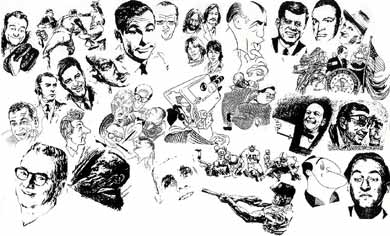
To search for a broadcast, please e nter a
Show Title, Personality, Airdate, Archive ID, Keyword or Phrase into the Search textboxes at the top of the page:
PRESERVING & ARCHIVING THE SOUND OF
LOST & UNOBTAINABLE ORIGINAL TV
(1946 - 1982)
"Preserving & disseminating important TV Audio
Air Checks, the video considered otherwise lost."
-Library of Congress
Vintage Television Audio Broadcasts
22,000 Titles - 20,000 Hours
Home | About us | Order Inquiry | TV Categories | Personality Index | Title Index
Archival Television Audio, Inc.
www.atvaudio.com
209 Sea Cliff Avenue
Sea Cliff, New York 11579
Attention: Phil Gries
|
Founder & Owner Phil Gries Director of Photography www.philgries.com |
"Any Inquiries"
Phone/Fax: (516) 656-5677
Email Us: gries@atvaudio.com
© 2002-2024 Collector's Choice Archival Television Audio, Inc.
All Rights Reserved.

Unique Visitors:
Visitor Counter
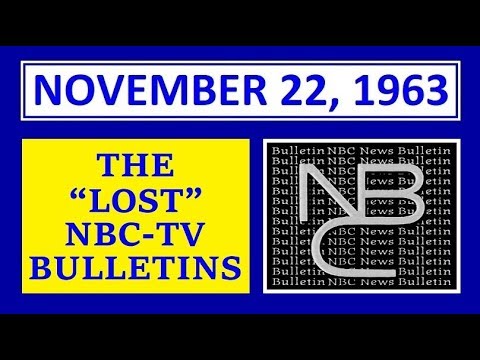
UNIQUE in the WORLD audio air check recordings by 20-year-old Phil Gries, archiving the first, second bulletins & initial NBC TV broadcast coverage of President John F. Kennedy's assassination. Not recorded by NBC or any other resource in the country.
- A&E TV SPECIAL - host Edwin Newman (11-22-1988) introduction - 25th Anniversary of JFK Assassination.
- NBC TV "Lost Don Pardo Bulletins" & Lost first 3:53 TV coverage (Phil Gries unique broadcast audio recording) unable to be video tape recorded or audio tape recorded by NBC.
- Phil Gries telephone interview with Don Pardo (5-14-1998).
- 10 minutes.
LIVE with PHIL GRIES
ARCHIVAL TELEVISION AUDIO - WEBINAR
Each Friday Evening from 7:30 - 8:30PM EST.
 RETRIEVABLE LOST MEMORIES
RETRIEVABLE LOST MEMORIESORDER
Vintage Television Audio Broadcasts
22,000 Titles
20,000 Hours
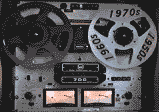
Testimonials
The Senior Moments Radio Broadcast show interviews Phil Gries about his Archival Television Audio archive and his restored documentary film, "Harlem School 1970"

Glen Cove Senior Center
January 23, 2018
 Phil Gries' recordings
Phil Gries' recordingsof vintage sounds
never grow old.

Hear Phil Gries on

Hear Phil Gries
and Joe Franklin
on Bloomberg Radio
(April 28, 2012)


Home
Contact Us
ORDER INQUIRY
Hear Phil Gries on
National Public Radio
Archive Profile

ALL THINGS CONSIDERED
"Raising Ali"
(May 22, 2015)
Hear Phil Gries
on Sports Talk:
August 25, 2019
June 26, 2016
August 9, 2015




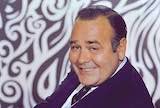
 Archive
ArchiveSearch Library
TV Categories
Personality Index
Title Index
ARSC Journal Article Publication: Lost TV Programs (1946-1972)

Hear Phil Gries presentations at ARSC (Association for Recorded Sound Collections) 2001, 2008, 2009, 2010, 2011, 2014.
Audio Samples

(Audio files may take 20 seconds or more to load)
1960's TV
Audio Player
103 Broadcast Samplers
AudioAndText™
Content
(Browser needs to
allow Flash content)
Content Collections
JFK Assassination
Coverage
NPR Walter Cronkite Essays
Civil Rights Movement (1956-1968)
Space Exploration (1956-1972)
Vietnam War
(1961-1975)
[854 Entries]
Company Information
About Us
Descriptions
Access
Fees
Archive
TIME-LINE
Accreditation
Master Materials
Research
Copyrights
Restricted Archive Titles
Catalogs
Related Materials
TV History
Lost Television
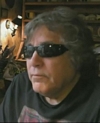
Jose Feliciano, at 70, listening to his FIRST TV variety show appearance (Al Hirt: FANFARE), telecast on July 17, 1965, when he was 19 years old.
TV Audio:
Rare & Valued
When TV Variety
Was King
This Anniversary Day
In Television History
ARSC/IASA London Conference: Why Collect?

News 12 Long Island
Live Television Profile:
Archival Television Audio, Inc
CAPTURED LIVE: CULTURES OF TELEVISION RECORDING AND STORAGE, 1945-1975

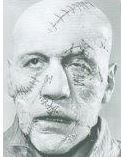
NBC MATINEE THEATER
FRANKENSTEIN
NBC TV - Feb. 5, 1957
8:23 min. excerpt
Phil Gries TV Audio Archive
Profile Segment
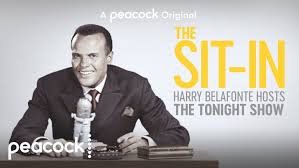
Harry Belafonte Hosts
The Tonight Show
5:21 min. excerpt
Password: Phil
(Case Sensitive)